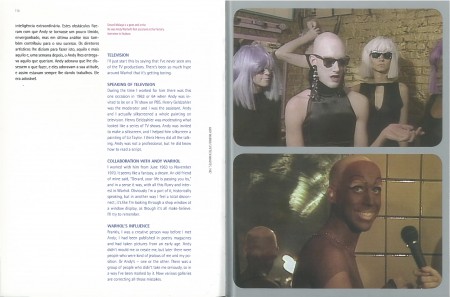It was his big dream to have his own television show. A program he would be in control of, but that would also allow him to have control over his own image.
As early as 1964 he made an imitation soap opera, to which he added real “adverts”.
At the beginning of the 70s, he played around at producing telenovelas that were the reflection of his aesthetic and fantastical universe.
In 1979 he put together a small team who were in charge of creating TV programs to be aired on the brand-new New York Cable. This team, including Vincent Fremont, Don Munroe and Sue Etkin, created Fashion, a talk show devoted to the fashion world, followed by Andy Warhol’s TV, a Factory style reality-TV show, before producing the famous Andy Warhol’s fifteen minutes, inspired by his renowned quote on the subject of fame.
This exhibition is a giant zap through Warhol’s television universe. A journey through the artist’s obsessions, his fascinations, his loves, his surprises and fears.
In 1987, the TV broadcast of Warhol’s funeral service became the tragic final chapter in the life of the man who had so desired to be on screen, to be, as we say, on air.
Warhol’s television no doubt represents the last unexplored aspect of this taboo-breaking artist’s work.
2 February to 3 April 2011. Oi Futuro Flamengo. Rio de Janeiro.
12 April to 12 juin 2011. Oi Future. Belo Horizonte.
29 july to 25 September 2011. SESC Pinheiros. Sao Paulo




